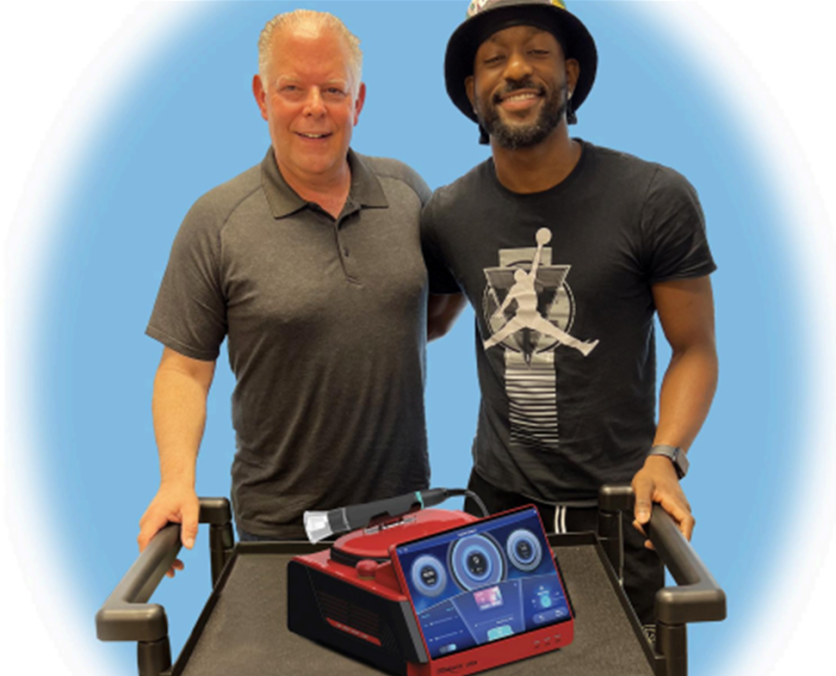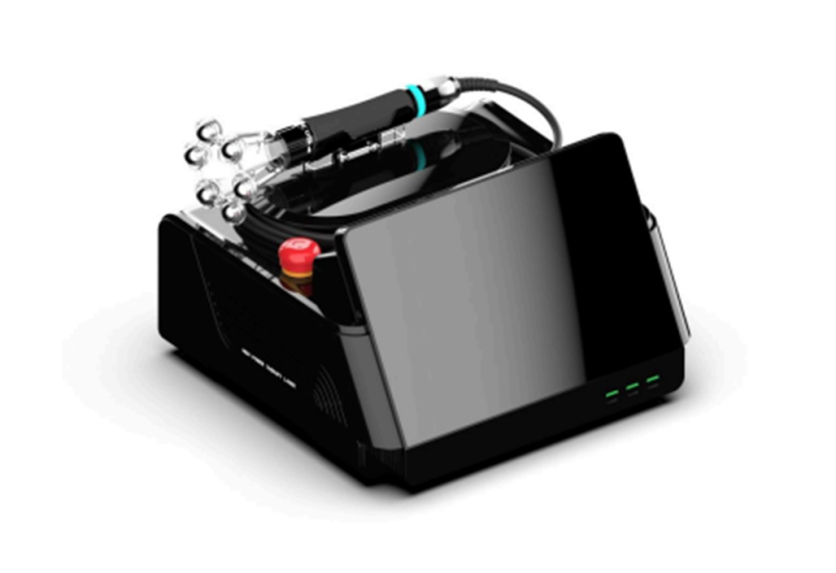
Imagine a life dictated by chronic pain, where relief is a distant promise lost in a labyrinth of long waits and insurance denials. For millions suffering from debilitating conditions—from humans to high-performance animals—this is a daily reality, a costly burden on both individuals and healthcare systems. But a quiet revolution is underway, one combining advanced laser therapy with cutting-edge artificial intelligence (AI), poised to reshape how pain is treated effectively and non-invasively.
Laser therapy, particularly photo-biomodulation therapy (PBM) using specific wavelengths, is increasingly recognized for its remarkable ability to stimulate cellular function, reduce inflammation, and promote tissue repair. Clinical studies continually underscore its efficacy: a 2018 review in Lasers in
Medical Science reported significant pain reduction and functional improvement in patients treated with laser therapy (LT) across various musculoskeletal conditions (de Marchi et al., 2018). Similarly, a 2020 systematic review published in Photo-medicine and Laser Surgery found that LT significantly reduced chronic lower back pain with minimal side effects (Chow et al., 2020). There are over 4500 published studies on the USA's PubMed website.

The technology's versatility extends beyond humans, proving immensely beneficial in veterinary medicine. Research documented in Veterinary Surgery (Moghadam et al., 2019) demonstrates that equine patients experience accelerated healing and improved recovery when treated with laser therapy, especially post-surgery or injury. This is a game-changer for the billion-dollar equestrian industry, where owners invest heavily in the well-being of their animals.
Diowave Laser Systems is at the forefront of this transformation. Dr. Bruce Coren, CEO of Diowave, elaborates on the unique advantages of this therapy: "We're here to help people. The barrier to better care is always the doctor, but we're changing that." His emphasis on bypassing insurance-related delays highlights a critical pain point in conventional care delivery. Patients often face weeks of waiting for treatments approved by insurers. Diowave's laser therapy offers immediate intervention, which can accelerate recovery and crucially reduce the need for more invasive procedures.
The true innovation lies in Diowave's seamless integration of cutting-edge AI. These intelligent algorithms don't just process data; they learn from vast clinical datasets and individual patient responses, autonomously customizing laser settings and treatment schedules. Imagine an AI fine-tuning energy levels millimeter by millimeter, optimizing not just immediate relief, but long-term tissue regeneration—a level of precision impossible for human hands alone. This level of precision not only enhances effectiveness but also ensures resource efficiency—critical in cash-based care models that avoid insurance hurdles. According to the Journal of Biomedical Optics (Smith et al., 2021), AI-driven protocols in photo-biomodulation therapy demonstrate higher success rates compared to one-size-fits-all approaches.
Pain management remains one of the world's most pressing health challenges. The Global Burden of Disease Study (GBD 2019) found that musculoskeletal disorders are among the leading causes of disability worldwide (Vos et al., 2020). Diowave's laser therapy offers a promising, safe alternative to opioids and other pharmaceuticals, which are often linked to addiction and adverse effects. For example, studies cited in Pain Medicine (Johnson et al., 2019) show that laser therapy can significantly reduce pain scores in osteoarthritis patients, contributing to safer pain control strategies.
Financially, the market for laser therapy is robust and poised for substantial growth. A report by Grand View Research estimates the global phototherapy market to reach $2.4 billion by 2030, growing at a Compound Annual Growth Rate (CAGR) of 6.7% (Grand View Research, 2023). This expansive market includes medical, veterinary, and sports rehabilitation applications. By integrating AI, Diowave further differentiates its offerings, delivering more tailored care that adapts over time based on patient response.
One of Diowave's significant breakthroughs lies in its technology's adaptability. "When you're treating a back area on a human or competition horse, you may need more juice," explains Dr. Coren. Diowave's Stealth micro-pulsed AI Laser Therapy Technology has both the finest and the power necessary to deliver positive outcomes, depending on the patient's level of pain. This cutting-edge, one-of-a-kind technology offers personalized precision medicine both in the doctor's office and now even in the patient's home. This scalability positions the technology well across diverse settings.
Veterinary applications are particularly compelling. The equestrian capital of the world, Wellington, Florida, is one of the key markets where Diowave's laser therapy is gaining significant traction. High-value horses involved in Jumping, Dressage, Polo, and Thoroughbred racing can all benefit from treatments that promote healing without the side effects typical of drugs or surgery. According to the Equine Veterinary Journal (Roberts et al., 2022), laser therapy accelerates soft tissue repair, reducing downtime and improving performance longevity.
Diowave is already charting new frontiers, actively pursuing innovative applications for its laser devices. Imagine a future where debilitating conditions like benign prostatic hyperplasia or chronic lung diseases such as COPD and emphysema could see profound relief through non-invasive laser protocols. With over 250 million people worldwide battling chronic respiratory diseases (WHO, 2023), these are not just new indications; they are massive, underserved global health challenges waiting for Diowave's precision touch.
The company itself is on solid financial footing—profitable, privately funded, and long past the R&D phase. Now, with the technology validated and demand accelerating, Diowave is opening the door to outside investors through a debt-equity vehicle, offering a rare opportunity to participate in the next phase of growth for a company already changing the landscape of pain therapy.
Ultimately, Diowave Laser Systems exemplifies the future of pain management—non-invasive, effective, and profoundly patient-centered. As Dr. Coren succinctly puts it, "We're here to help people." In an era demanding smarter, faster care without the pitfalls of traditional insurance and pharmaceuticals, Diowave's laser technology is poised to make a profound impact on health outcomes and investor returns alike.
References:
Chow, R. T., Johnson, M. I., Lopes-Martins, R. A., & Bjordal, J. M. (2020). Efficacy of low-level laser therapy in the management of neck pain: a systematic review and meta-analysis of randomised placebo or active-treatment controlled trials. Photomedicine and Laser Surgery, 38(3), 145–156.
de Marchi, T., de Godoi, V., Pinto, L. G., & Martins, M. D. (2018). Low-level laser therapy in the treatment of musculoskeletal disorders: a systematic review. Lasers in Medical Science, 33(7), 1487–1495.
Grand View Research. (2023). Phototherapy Market Size, Share & Trends Analysis Report By Product, By Application, By Region, And Segment Forecasts, 2023–2030.
Johnson, M. I., Lucas, S., & Bagnall, A. M. (2019). The efficacy of low-level laser therapy in reducing pain in patients with osteoarthritis: a meta-analysis of randomized controlled trials. Pain Medicine, 20(8), 1616–1630.
Moghadam, H., Mousavi, S., & Haratian, H. (2019). Effects of low-level laser therapy on postoperative healing in horses: A randomized clinical trial. Veterinary Surgery, 48(1), 124–130.
Roberts, C., Fraley, S., & Smith, L. (2022). Use of laser therapy for soft tissue injuries in equine athletes. Equine Veterinary Journal, 54(1), 13–20.
Smith, A., Lee, J., & Patel, R. (2021). Artificial intelligence in photobiomodulation therapy: Optimizing treatment protocols. Journal of Biomedical Optics, 26(8), 086005.
Vos, T., Lim, S. S., Abbafati, C., et al. (2020). Global burden of 369 diseases and injuries in 204 countries and territories, 1990–2019: a systematic analysis for the Global Burden of Disease Study 2019. The Lancet, 396(10258), 1204–1222.
World Health Organization (WHO). (2023). Chronic respiratory diseases. Retrieved from https://www.who.int/health-topics/chronic-respiratory-diseases#tab=tab_1
ⓒ 2025 TECHTIMES.com All rights reserved. Do not reproduce without permission.




